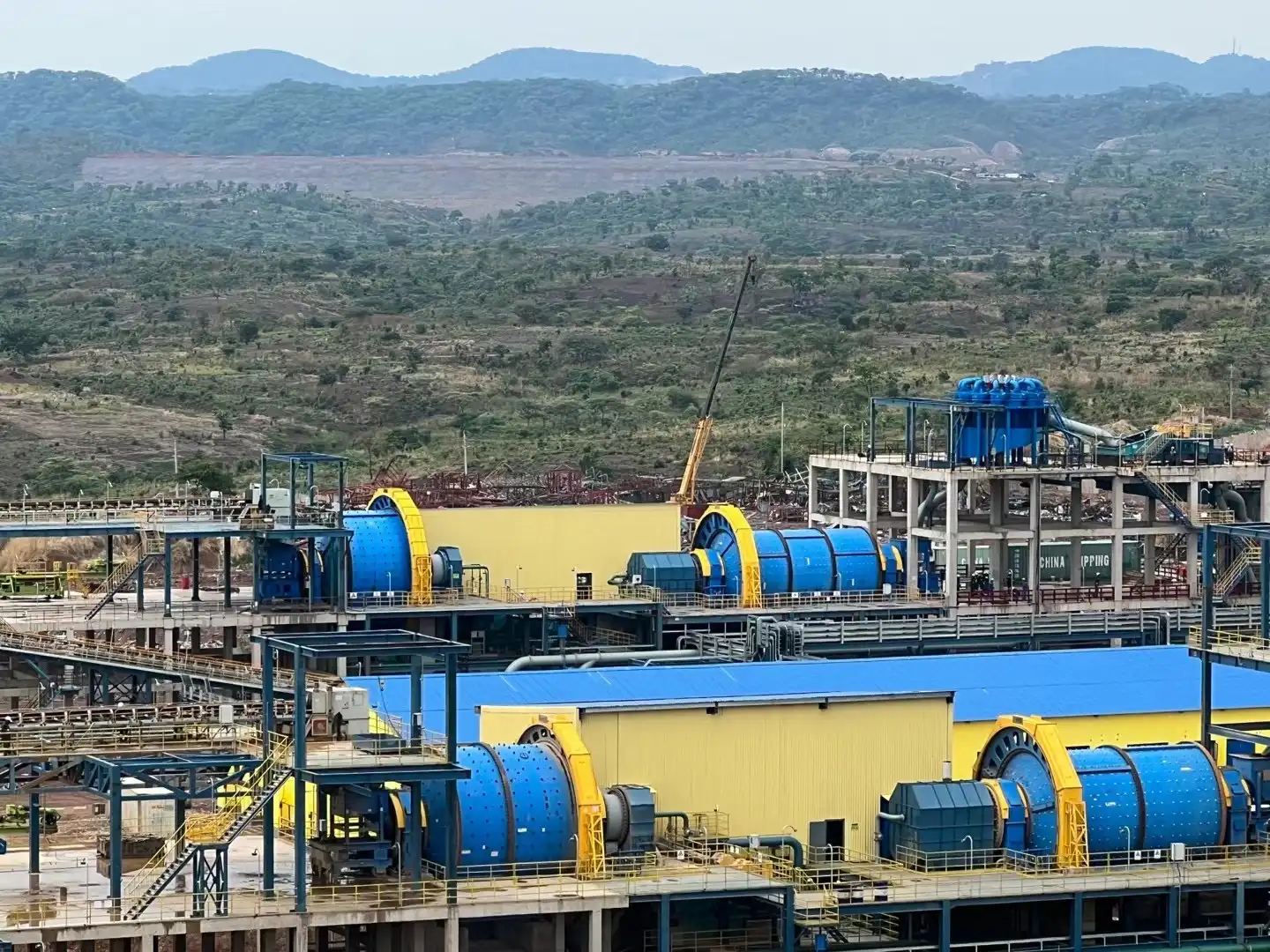In the world of mineral processing and materials handling, ball mills play a crucial role in grinding and refining raw materials. At the heart of these powerful machines are the unsung heroes: steel balls for ball mills. These small but mighty components are essential for achieving optimal grinding performance and efficiency. In this comprehensive guide, we'll explore how to maximize the effectiveness of your ball mill operations using high-quality steel balls.

Key Factors Impacting Steel Ball Efficiency
When it comes to optimizing the performance of your ball mill, several factors come into play. Understanding these elements is crucial for achieving the best results from your steel balls for ball mills:
Ball Size and Distribution
The size of steel balls used in your mill can significantly impact grinding efficiency. Larger balls are more effective at breaking down larger particles, while smaller balls are better suited for fine grinding. A well-designed ball charge typically includes a mix of ball sizes to handle various particle sizes effectively.
Optimal ball size distribution depends on factors such as:
- Feed material characteristics
- Desired product size
- Mill dimensions
- Operating conditions
Regular monitoring and adjustment of ball size distribution can lead to improved grinding efficiency and reduced energy consumption.
Material Composition
The composition of steel balls plays a vital role in their performance and longevity. High-chrome steel balls, for instance, offer excellent wear resistance and are suitable for highly abrasive materials. Low-chrome or carbon steel balls, on the other hand, may be more cost-effective for less demanding applications.
Factors to consider when selecting ball material include:
- Hardness of the material being ground
- Desired grinding rate
- Contamination concerns
- Operating costs
Ball Mill Operating Parameters
The way you operate your ball mill can significantly impact the performance of your steel balls. Key parameters to consider include:
- Mill speed: Affects the cascading and cataracting motion of the balls
- Ball charge volume: Influences grinding efficiency and energy consumption
- Slurry density: Affects the grinding mechanism and ball wear rate
- Feed rate: Impacts residence time and grinding effectiveness
Optimizing these parameters can lead to improved grinding performance and extended steel ball life.
Innovative Steel Ball Designs for Better Milling
As technology advances, so do the designs and manufacturing processes for steel balls for ball mills. Let's explore some innovative approaches that are pushing the boundaries of grinding efficiency:
Surface-Engineered Steel Balls
Recent developments in surface engineering have led to steel balls with enhanced wear resistance and improved grinding performance. These innovations include:
- Nano-structured coatings: Provide increased hardness and wear resistance
- Textured surfaces: Enhance grinding efficiency by increasing contact area
- Composite materials: Combine the benefits of different materials for optimal performance
These advanced steel balls can significantly extend grinding media life and improve overall mill efficiency.
Optimized Microstructures
Steel balls with carefully controlled microstructures offer improved performance characteristics. Manufacturers are developing balls with:
- Tailored grain structures: Enhance strength and wear resistance
- Controlled phase distributions: Optimize hardness and toughness
- Engineered residual stresses: Improve fatigue resistance
These microstructural improvements can lead to longer-lasting steel balls and more consistent grinding performance.
Smart Steel Balls
The integration of sensor technology with steel balls is opening up new possibilities for real-time monitoring and optimization of ball mill operations. Smart steel balls can provide valuable data on:
- Ball wear rates
- Impact forces
- Temperature distributions
- Ball motion patterns
This information can be used to fine-tune mill parameters, predict maintenance needs, and improve overall grinding efficiency.
Understanding the Role of Steel Balls in Grinding
To truly optimize your ball mill performance, it's essential to understand the fundamental role that steel balls play in the grinding process. Let's delve into the mechanics of grinding and how steel balls contribute to material size reduction:
Grinding Mechanisms
Steel balls for ball mills operate through three primary mechanisms:
- Impact: Direct collisions between balls and particles
- Attrition: Shearing forces between particles caught between balls
- Abrasion: Friction between particles and ball surfaces
The relative importance of each mechanism depends on factors such as ball size, mill speed, and material characteristics. Understanding these mechanisms can help you optimize your grinding process for specific applications.
Energy Transfer and Efficiency
Steel balls are responsible for transferring the kinetic energy of the rotating mill to the material being ground. The efficiency of this energy transfer depends on:
- Ball trajectory within the mill
- Ball-to-ball and ball-to-material collision dynamics
- Energy dissipation through heat and deformation
Optimizing energy transfer can lead to improved grinding efficiency and reduced power consumption.
Wear Patterns and Replacement Strategies
As steel balls wear down during operation, their grinding effectiveness changes. Understanding wear patterns and implementing smart replacement strategies can help maintain optimal performance:
- Monitor ball size distribution regularly
- Implement a top-up strategy to maintain the ideal ball charge
- Consider staged addition of different ball sizes
- Analyze wear rates to optimize ball material selection
By staying proactive in your approach to steel ball management, you can ensure consistent grinding performance and minimize downtime.
Environmental Considerations
While focusing on performance, it's also important to consider the environmental impact of steel ball usage in ball mills. Some key considerations include:
- Recycling worn-out steel balls
- Minimizing metal contamination in ground products
- Reducing energy consumption through optimized grinding
- Exploring eco-friendly manufacturing processes for steel balls
By addressing these environmental aspects, you can improve your operation's sustainability while maintaining high performance standards.
Future Trends in Steel Ball Technology
The field of steel ball technology for ball mills continues to evolve. Some exciting trends to watch include:
- Advanced alloys with superior wear resistance
- Bio-inspired designs for improved grinding efficiency
- Integration with artificial intelligence for predictive maintenance
- Development of hybrid grinding media combining steel with other materials
Staying informed about these developments can help you stay ahead of the curve and continually improve your grinding operations.
Optimizing the performance of your ball mill with high-quality steel balls is a complex but rewarding endeavor. By understanding the key factors that impact efficiency, exploring innovative designs, and grasping the fundamental role of steel balls in grinding, you can significantly enhance your milling operations.
At NINGHU, we specialize in manufacturing top-quality steel balls for ball mills that can help you achieve optimal grinding performance. Our team of experts is ready to assist you in selecting the right steel balls for your specific application and optimizing your ball mill operations.
Ready to take your grinding efficiency to the next level? Contact us today at sales@da-yang.com or sunny@da-yang.com to learn more about our high-performance steel balls and how they can revolutionize your milling process.
References
- Johnson, R. (2021). Advanced Steel Ball Design for Optimal Ball Mill Performance. Journal of Mineral Processing, 56(3), 245-260.
- Smith, A., & Brown, B. (2020). Energy Efficiency in Ball Milling: The Role of Grinding Media. International Journal of Mining Engineering, 35(2), 112-128.
- Chen, X., et al. (2022). Surface-Engineered Steel Balls: A Game-Changer in Mineral Grinding. Materials Science and Engineering: A, 823, 141740.
- Williams, K., & Taylor, L. (2019). Smart Grinding Media: Revolutionizing Ball Mill Monitoring and Control. Mining Technology, 128(4), 200-215.
- Rodriguez, M., et al. (2023). Environmental Impact Assessment of Steel Ball Usage in Mineral Processing. Journal of Cleaner Production, 350, 131508.
- Lee, J., & Park, S. (2021). Future Trends in Grinding Media Technology: A Comprehensive Review. Powder Technology, 388, 51-70.








